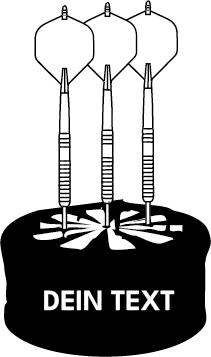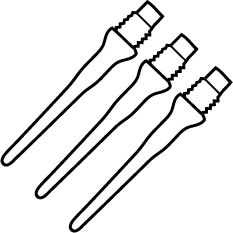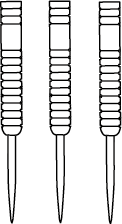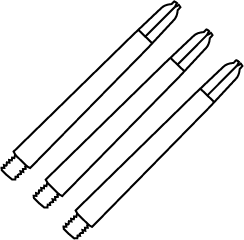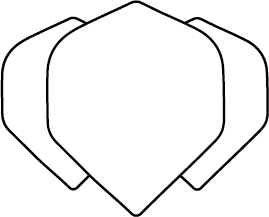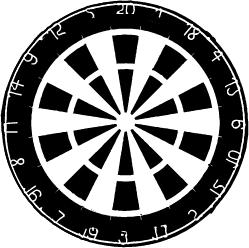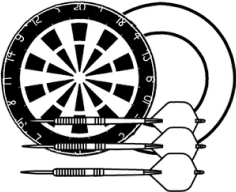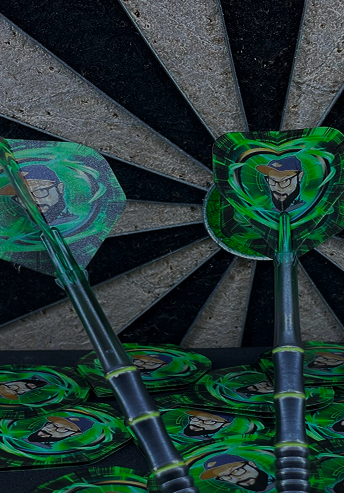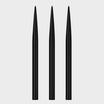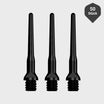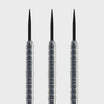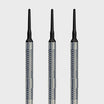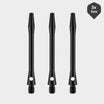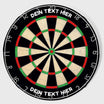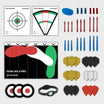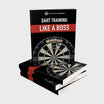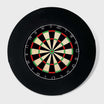In this blog post, we'd like to take a closer look at the sport of soft darts and discuss the regulations. We'll also discuss the differences between them and steel darts, but we'd like to focus on the "soft dart" type. Like steel darts, soft darts also have their own characteristics that must be taken into account. Especially considering that some amateur players enjoy playing both sports, it's good to know the differences and be aware of them to avoid making mistakes.

The basic rules for soft darts
We'd like to begin this blog post with the basic rules for soft tip darts. As with the article on steel tip dart rules , we'd like to start by discussing the distance and height of the dartboard. There's a reason for this, as there was a significant change here a few years ago. Until 2015, the throwing distance for electronic darts was exactly 244 cm. This is exactly 7 centimeters longer than for steel tip darts. However, in order to bring the two sports a little closer together, these rules were adjusted accordingly in 2015, so that today there is no longer any difference in the throwing distance between electronic darts and steel tip darts.
We're saying this so explicitly because it's certainly possible that some pubs that don't offer competitive sports haven't yet noticed this rule change. Adjusting the distance between the soft tip darts and the dartboard is particularly advantageous for players who enjoy playing both sports and have interchangeable tips. So, you can expect to see little difference in the quality of your game.
The height of the dartboard, however, has always been the same. Even with soft tip darts, the bull's-eye is exactly 173 centimeters high. Thus, the diagonal distance, at 293 centimeters, is now the same as with steel tip darts – but only since 2015. Previously, the distance was 298 centimeters, as the throwing line was 7 centimeters further back.
https://youtu.be/2VaqSrl-pnc
Special features of soft darts – When do the points count?
One special feature that sets electronic darts apart from steel tip darts is the number of points scored. In steel tip darts, the rule is that points only count if the dart actually sticks in the board. However, in soft tip darts, it's extremely common for soft tip darts with a plastic tip to bounce off the board because they don't land precisely on the board to stick. Nevertheless, the electronic scorer usually shows that the score has been achieved. And that's precisely where the difference lies.
In e-darts or soft tip darts, points scored by darts that don't stick in the board also count. Technically, this is impossible to implement any other way, because as soon as the tip touches the board, the points are automatically deducted from the score. This means that it would be impossible to add the points back during a game if the dart doesn't stick.
Fun fact: Especially with soft darts, you'll often encounter players who use a very extravagant throwing style . This is because these players know full well that the darts don't have to stick in the board.
Speaking of darts – what are the regulations for soft darts?
There are also a few things to consider regarding the darts themselves. Electronic dart machines are generally sensitive. This also means that overly hard hits can eventually cause certain segments on the board to stop working. To avoid this problem, the maximum weight for soft darts is significantly lower than the maximum weight for steel tip darts. The upper limit is just 21 grams – and this has only been the case since 2019. Previously, the upper limit was only 18 grams. Anyone familiar with these gram measurements will be surprised to find that players often start at 21 grams or higher when playing steel tip darts.
This fact alone makes it almost impossible to compare the two sports. As soon as a steel-tip dart player stands in front of an electronic dart machine, they will notice the dramatic difference that 4 or 5 grams lighter darts can make.

There's also a limit on the length. The maximum length is 16.8 centimeters. In principle, there's hardly a player who would exceed this length, but it's worth noting that the regulations are stricter than for steel tip darts, where the maximum length is 30 centimeters.
The development of darts
Especially in the development of darts, soft-tip darts still lead the way today. Especially in Asia and America, soft-tip darts are significantly more popular than steel-tip darts. This is also true in Germany, where the number of soft-tip dart players is still many times higher. This is also due to the fact that many restaurants and bars are still equipped with dart machines instead of steel-tip dartboards. There are, of course, good reasons for this, as an electronic dart machine allows the owner to earn money.
However, due to the boom in steel tip darts in recent years, soft tip darts have become increasingly less attractive. This is also due to the fact that, especially in competitive sports, it's easier to make money with steel tip darts than with ed tip darts. The problem still lies in the fact that soft tip darts are considered more of a pub sport.
Behaviors during the game
In the previous section, we discussed how soft darts unfortunately still have the reputation of being a fringe sport, played in pubs. This is also evident in the behavior of competitive players. While steel darts are often quieter so as not to disrupt the players' concentration, the atmosphere in e-darts is much more relaxed.
By no means do we mean that people talk, sing, or shout too loudly; rather, it's not so much about the competition itself as it is about having a fun evening with the opposing team. The choice of darts depends to a large extent on the type of player. If you're looking for competition and performance, steel darts are probably the better choice. However, if you're looking for a more relaxed evening with friends, electronic darts might be a better fit.

Ready to take your skills to the next level? Discover our exclusive secrets and proven methods to optimize your game:
- Dart Elimination » We explain the rules of darts and introduce you to the most popular variations. You can find all the information here. Click here now!
- Learn how strength training affects your darts performance. Our guide offers insights and facts. Click here to learn more!
Sofern nicht anders angegeben, unterliegt das im Beitrag gezeigte Bildmaterial mit Bezug zu Dartspielern und verwandten Themen dem Copyright der Professional Darts Corporation (© PDC).

